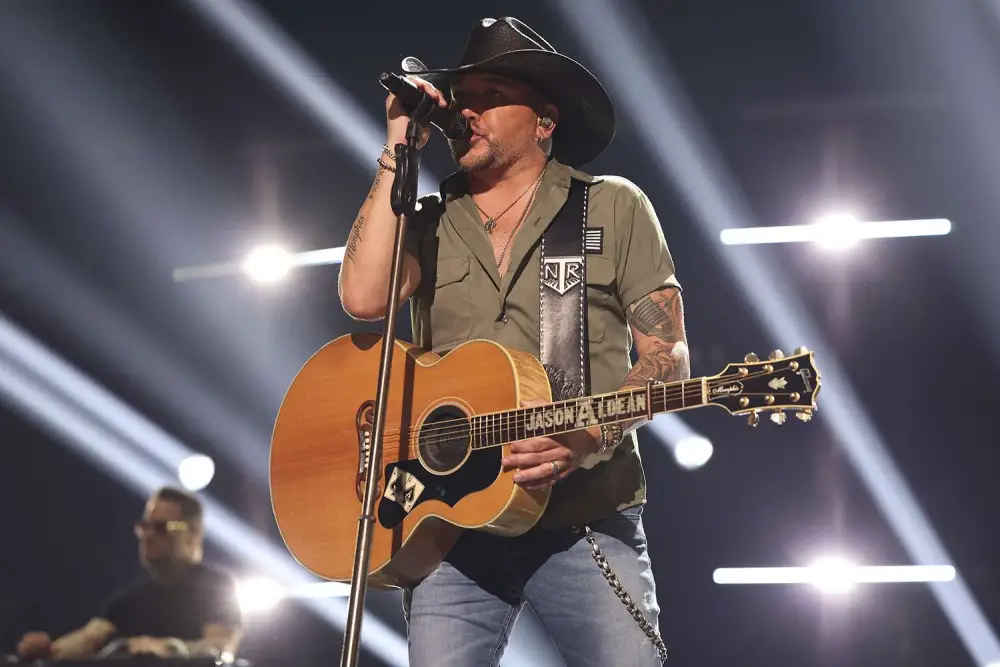When today’s biggest country stars talk about their influences, the names they mention might surprise you. While you’d expect to hear about classic country legends, many of Nashville’s current chart-toppers draw inspiration from rock icons, pop innovators, and musical pioneers who never stepped foot on the Grand Ole Opry stage. These cross-genre influences have quietly revolutionized country music, creating the diverse sound landscape we hear today.
The Evolution of Country Music’s Musical DNA
Country music has always been a melting pot of American musical traditions, but the modern era has seen an unprecedented expansion of influences shaping the genre. From the early days when country was strictly defined by steel guitars and fiddles, today’s artists are pulling from jazz, rock, pop, R&B, and even electronic music to create something entirely new while still honoring their roots.
This evolution didn’t happen overnight. It began in the 1960s and 70s when artists like Glen Campbell and Kenny Rogers started incorporating more pop sensibilities into their country sound. The trend accelerated through the 80s and 90s with artists like Garth Brooks drawing from rock anthems and arena-style performances, fundamentally changing what country music could be.
Today’s country stars have grown up in an era of musical diversity, where streaming services and social media expose them to every genre imaginable. The result is a generation of artists who see no boundaries between musical styles, leading to some of the most innovative and commercially successful country music in history.
Rock Legends Who Quietly Influenced Country
One of the most significant cross-genre influences on modern country music comes from classic rock. Artists like Tom Petty, whose storytelling and melodic sensibilities have influenced countless country songwriters, created a blueprint for heartland rock that translates perfectly to country music’s narrative tradition.
The Eagles, particularly their harmonies and production techniques, have left an indelible mark on country music. Their approach to layering vocals and creating atmospheric sounds appears in everything from mainstream country radio hits to indie country albums. The band’s ability to blend rock instrumentation with country storytelling has become a standard template for modern country production.
Even heavier rock influences have found their way into country music. Artists like Lynyrd Skynyrd and ZZ Top, with their Southern rock swagger and guitar-driven sound, have influenced the more rock-leaning side of country music. This influence is particularly evident in the “bro country” movement and the continuing popularity of country rock crossover hits.
The storytelling tradition in rock music, particularly from artists like Bruce Springsteen and John Mellencamp, has also significantly influenced country songwriting. Their ability to capture small-town American life and working-class struggles resonates deeply with country music’s core themes, providing a template for how to address social issues within accessible, radio-friendly formats.
Pop Innovators Who Changed Country’s Sound
The influence of pop music on country extends far beyond simple commercial considerations. Innovative pop artists have introduced production techniques, song structures, and performance styles that have become integral to modern country music.
The Beach Boys, particularly Brian Wilson’s innovative production and arrangement techniques, have influenced country music in ways that might not be immediately obvious. Their approach to vocal harmonies, layered instrumentation, and studio experimentation has appeared in countless country recordings, from the most polished Nashville productions to independent country albums.
Artists like Fleetwood Mac have provided a template for how personal relationships and emotional turmoil can be transformed into compelling musical narratives. Their influence appears not just in the confessional nature of much modern country songwriting, but also in the sophisticated production techniques and multi-layered arrangements that have become standard in contemporary country music.
The influence of Motown and classic soul music has also shaped country music’s rhythmic and vocal approaches. Artists like Stevie Wonder and Marvin Gaye introduced grooves and vocal techniques that have been adapted and incorporated into country music, particularly in the more R&B-influenced subgenres that have emerged in recent years.
The Songwriting Revolution
Perhaps the most significant influence from outside the country genre has been in songwriting approaches and techniques. The confessional songwriting style popularized by singer-songwriters like Joni Mitchell and James Taylor has become a cornerstone of modern country music, particularly in the singer-songwriter and Americana movements.
The narrative complexity introduced by artists like Bob Dylan has elevated country songwriting from simple three-chord progressions to sophisticated musical storytelling. Dylan’s influence appears not just in the intellectual approach to lyrics, but also in the willingness to experiment with song structures and musical arrangements.
Folk music’s revival in the 1960s and its continued influence through artists like Neil Young has provided country music with a rootsy authenticity that balances its commercial ambitions. This folk influence has been particularly important in the Americana and alt-country movements, which have pushed country music toward more artistic and experimental territory.
The punk and alternative rock movements have also contributed to country music’s evolution, particularly in the independent country scene. The DIY ethos and raw emotional honesty of punk rock has influenced a generation of country artists who prioritize authenticity over commercial polish.
Production and Performance Innovations
Modern country music’s sound has been shaped by production innovations that originated in other genres. The wall of sound techniques pioneered in pop and rock music have been adapted for country, creating the lush, layered productions that dominate contemporary country radio.
Electronic music’s influence might seem unlikely in country music, but drum machines, synthesizers, and digital effects have become increasingly common in country production. This electronic influence is most obvious in the pop-country crossover hits that dominate the charts, but it also appears in more subtle ways throughout the genre.
The performance styles and stage presence techniques developed in rock and pop music have revolutionized country music’s live presentation. From elaborate stage productions to intimate acoustic performances, country artists have borrowed presentation techniques from across the musical spectrum to enhance their connection with audiences.
Regional Influences and Musical Migration
The geographic expansion of country music has brought regional musical influences into the genre. West Coast country has incorporated elements of surf rock and California pop, while Texas country has maintained stronger rock and blues influences. These regional variations have enriched the overall country music landscape.
The influence of Latin music, particularly in regions with significant Hispanic populations, has introduced new rhythmic elements and instrumental approaches to country music. This influence has been particularly noticeable in the development of country music in the Southwest and California.
International influences have also shaped modern country music, with Celtic traditions, Canadian folk music, and even Australian country contributing to the genre’s evolution. These international influences have been facilitated by increased cultural exchange and the global reach of modern media.
The Impact on Songwriting Communities
Nashville’s songwriting community has been transformed by the influx of writers from diverse musical backgrounds. Writers who cut their teeth in rock, pop, R&B, and other genres have brought new perspectives and techniques to country songwriting, creating a more diverse and sophisticated approach to country music composition.
The collaboration between country artists and writers from other genres has become increasingly common, leading to cross-pollination of ideas and techniques. These collaborations have produced some of country music’s biggest hits while pushing the genre into new creative territory.
The rise of independent country music has also been influenced by the DIY approaches developed in punk, indie rock, and folk music. Independent country artists have adopted the business models, production techniques, and distribution strategies developed in other genres, creating alternative pathways for country music careers.
Contemporary Artists and Their Diverse Influences
Today’s country superstars openly acknowledge their diverse influences, creating music that reflects their broad musical tastes while maintaining country music’s core appeal. This openness to outside influences has created a more inclusive and innovative country music landscape.
Artists like Keith Urban have brought rock guitar techniques and pop sensibilities to country music, while singers like Carrie Underwood have incorporated elements from pop, rock, and gospel music. These artists represent a generation that sees country music as a big tent capable of incorporating diverse influences while maintaining its distinctive character.
The success of country music festivals that feature diverse lineups has also demonstrated the genre’s ability to coexist with and learn from other musical styles. These festivals have become laboratories for musical experimentation and cross-genre collaboration.
The Future of Musical Influence in Country
As streaming services continue to break down genre barriers and expose listeners to increasingly diverse music, country music’s influences will likely become even more varied and unexpected. The next generation of country artists is growing up with access to more music than any previous generation, suggesting that future country music will be shaped by an even broader range of influences.
The continued evolution of technology will also influence how country music incorporates elements from other genres. Digital production tools make it easier than ever to experiment with different sounds and styles, while social media platforms provide new opportunities for cross-genre collaboration and influence.
The globalization of music markets also suggests that country music will continue to incorporate international influences, creating new fusion styles and expanding the genre’s global appeal. This international influence will likely accelerate as country music continues to grow in popularity outside the United States.
Conclusion: The Strength of Musical Diversity
The influence of non-country artists on modern country music demonstrates the genre’s strength and adaptability. Rather than diluting country music’s essence, these diverse influences have enriched the genre, providing new tools for expression while maintaining the storytelling and emotional authenticity that defines country music.
This musical cross-pollination has created opportunities for artistic growth and commercial success that wouldn’t have existed in a more insular genre. Country music’s willingness to embrace outside influences while maintaining its core identity has positioned it as one of the most dynamic and successful genres in contemporary music.
As country music continues to evolve, the artists and innovations that influence it will likely become even more diverse and unexpected. This evolution ensures that country music will remain relevant and vital, continuing to connect with new generations of listeners while honoring its rich traditional roots. The future of country music lies not in isolation, but in its continued openness to the full spectrum of musical expression and human experience.

